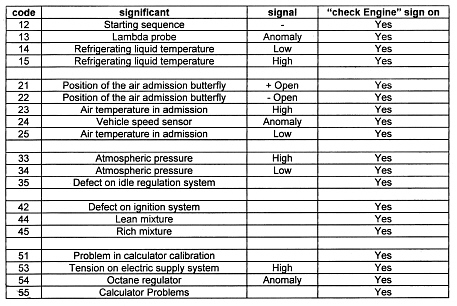
Lada Niva 1.7TBi (VAZ 2121) Oxygen Sensor Circuit Modification to Allow the use of Aftermarket Oxygen Sensors.
(This will also apply to the Lada Riva/Signet if fitted with the 1.7i engine).
Background:
Probably the weakest link in any catalytic converter equipped car is the oxygen (lambda) sensor in the exhaust. This component has a finite life span and is quite sensitive to contamination, particularly if fuel is used that contains any lead or silicon impurities. Even under the best circumstances, they operate in a pretty harsh environment, inside the exhaust down pipe mere inches from the manifold.
These vehicles were originally fitted with a sensor made by AC Delco, with the part number AC97. This particular sensor has been out of production for a number of years now and is really quite hard to find. However from a technical perspective it's a perfectly ordinary 4-terminal oxygen sensor, and there should be no reason that it couldn't be replaced with a more readily available one, such as Bosch part number 0 258 005 133.
The Problem:
As many people who have tried to use aftermarket oxygen sensors like these on the Niva have found, it's not that simple and all too often this will result in a lit check engine light with error code 13 (lambda probe signal anomaly) being recorded by the on board diagnostic system. With this appearing with a brand new sensor, it's not surprising that owners have doubted the condition of the sensor, or blamed other vehicle faults or the cat itself, when in fact the problem appears to be due to a design flaw with the vehicle ECU. When everything is working properly, the emissions performance of these cars is actually really very good - especially bearing in mind the age of the engine design and the simplicity of the injection system.
The original AC97 oxygen sensor shares a signal ground terminal between terminal C of the 4-way connector AND the actual body of the sensor. This ensures that the signal ground line is solidly tied to the vehicle ground. The vast majority of other sensors (such as the Bosch one referenced above) instead have the sensor ground isolated from the case. This generally wouldn't be a problem were it not for a design flaw with the ECU.
It appears that there is no proper ground reference connected to pin D6 (oxygen sensor signal ground) within the ECU. As a result, if an aftermarket sensor is used, the whole circuit is left "floating" without a proper ground path. The result of this being that as soon as the vehicle tries to switch into closed loop mode, fault code 13 is logged, the check engine light is lit and the vehicle goes into a failsafe mode essentially "guessing" the lambda value based on engine temperature, load, throttle position and RPM.
The Solution:
The solution for this problem is to provide a proper signal ground for the ECU. In my case I used the one normally shared between the throttle position and coolant temperature sensors.
While this sounds complicated and scary, it really isn't. All that needs to be done is that a couple of wires need to be cut and spliced together.
The wires leading to terminals D6 and A11 should be carefully cut and joined together. This should then restore correct operation of the emission control system even with an aftermarket oxygen sensor. Obviously the vehicle battery should be disconnected before this work is undertaken, and the ECU unplugged. There should be enough slack in the ECU wiring harness to allow this modification to be done pretty easily.
Please note that he above relates to vehicles fitted with the single point/throttle body fuel injection system as fitted to Nivas in the UK between 1995 and 1998. I have NO EXPERIENCE with the later multipoint injection systems and do not know whether they suffer from similar issues.
Also for reference, here are the list of status/error codes which can be read out of this system by counting flashes from the check engine light.

Page change log:
28th April 2023: Revised Statcounter code to allow for HTTPS operation.